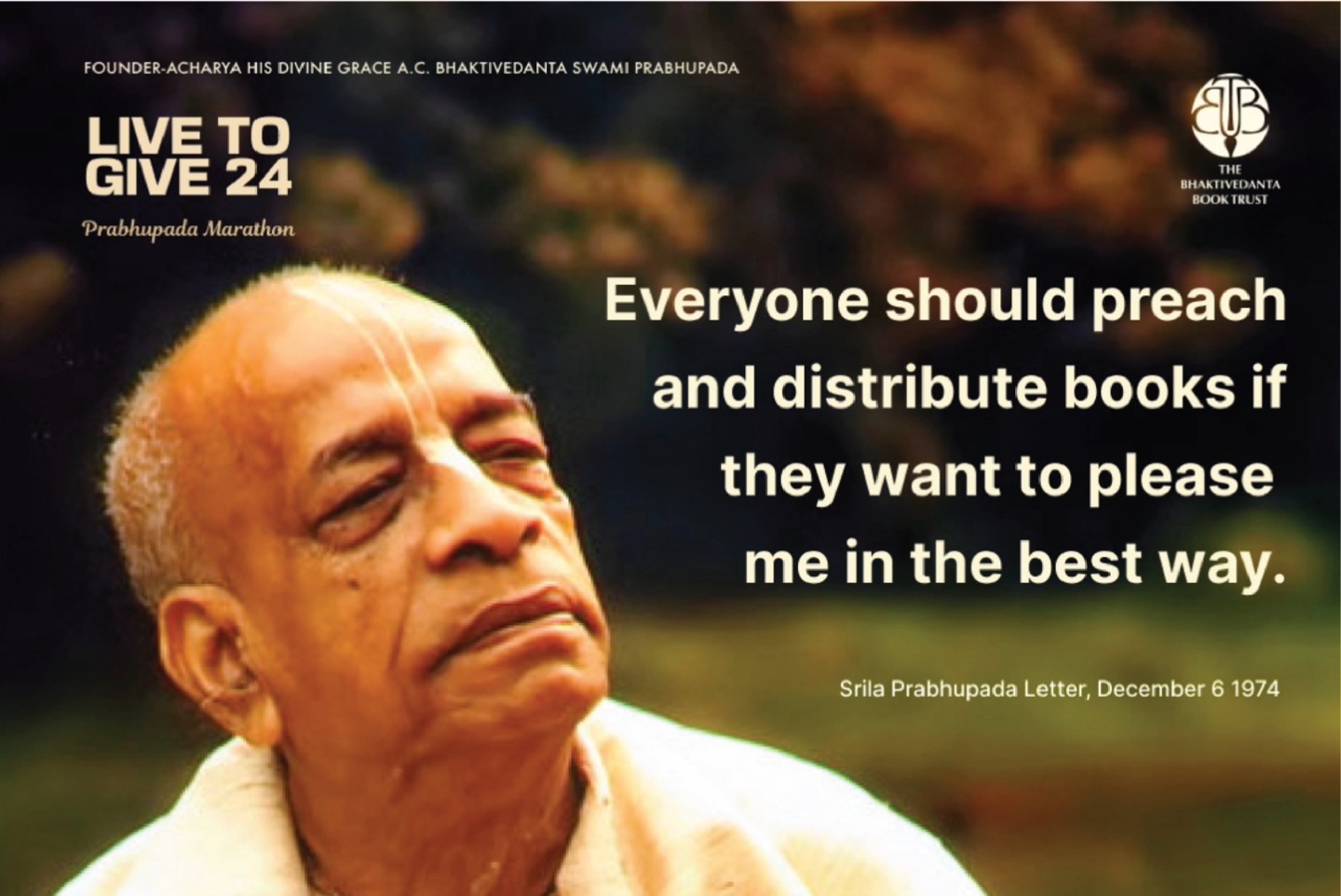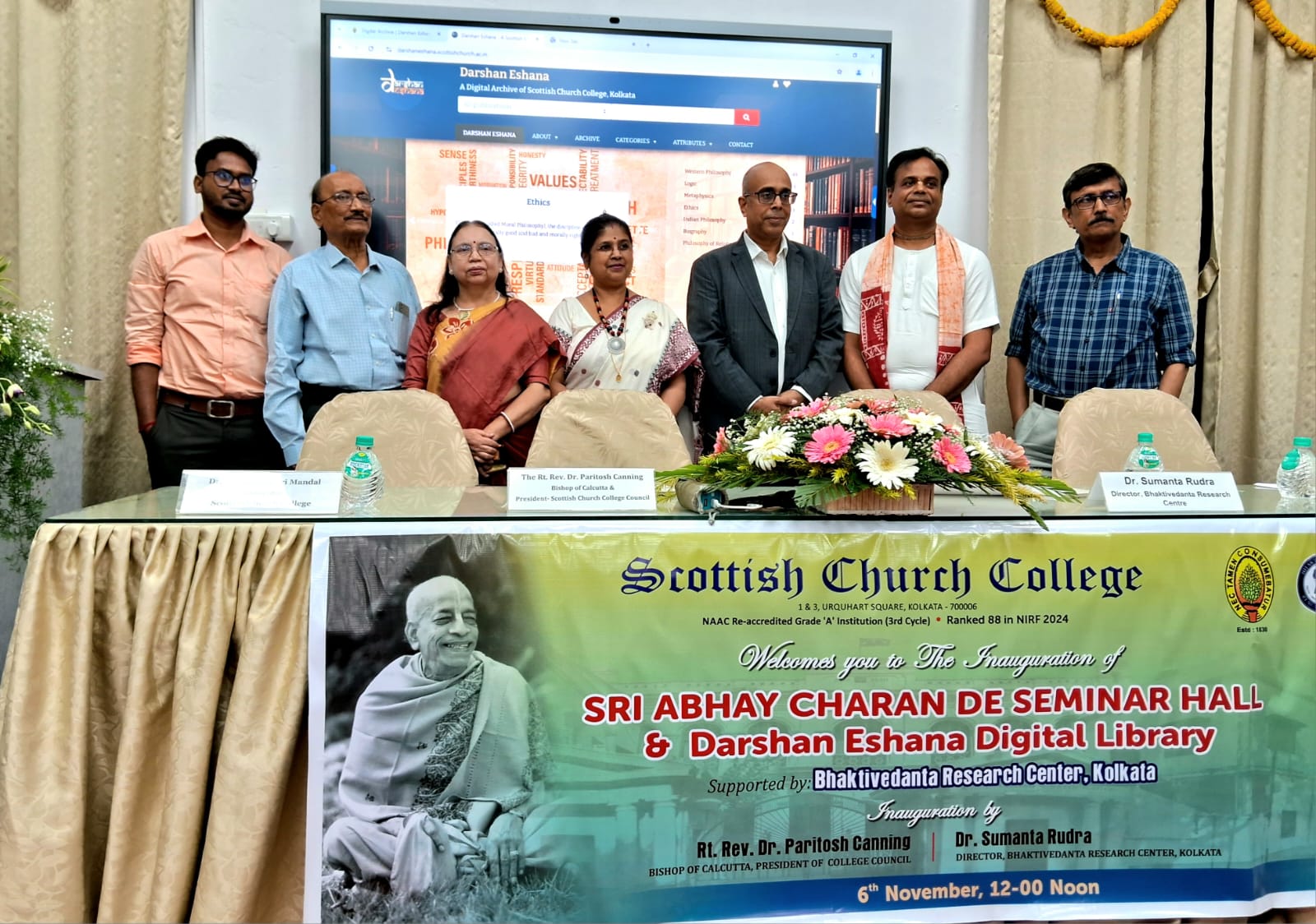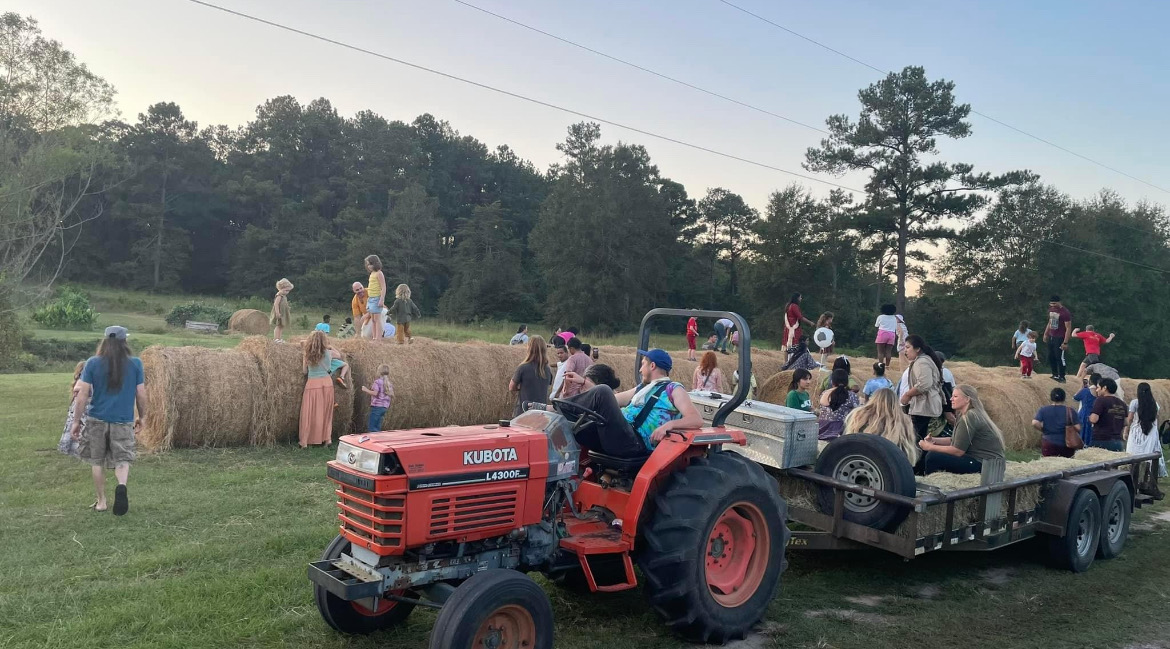Священное празднование Картика: месяц глубокой преданности и комических обетов
Автор: Атма Таттва дас, сотрудник отдела новостей ИСККОН | Окт 13, 2024
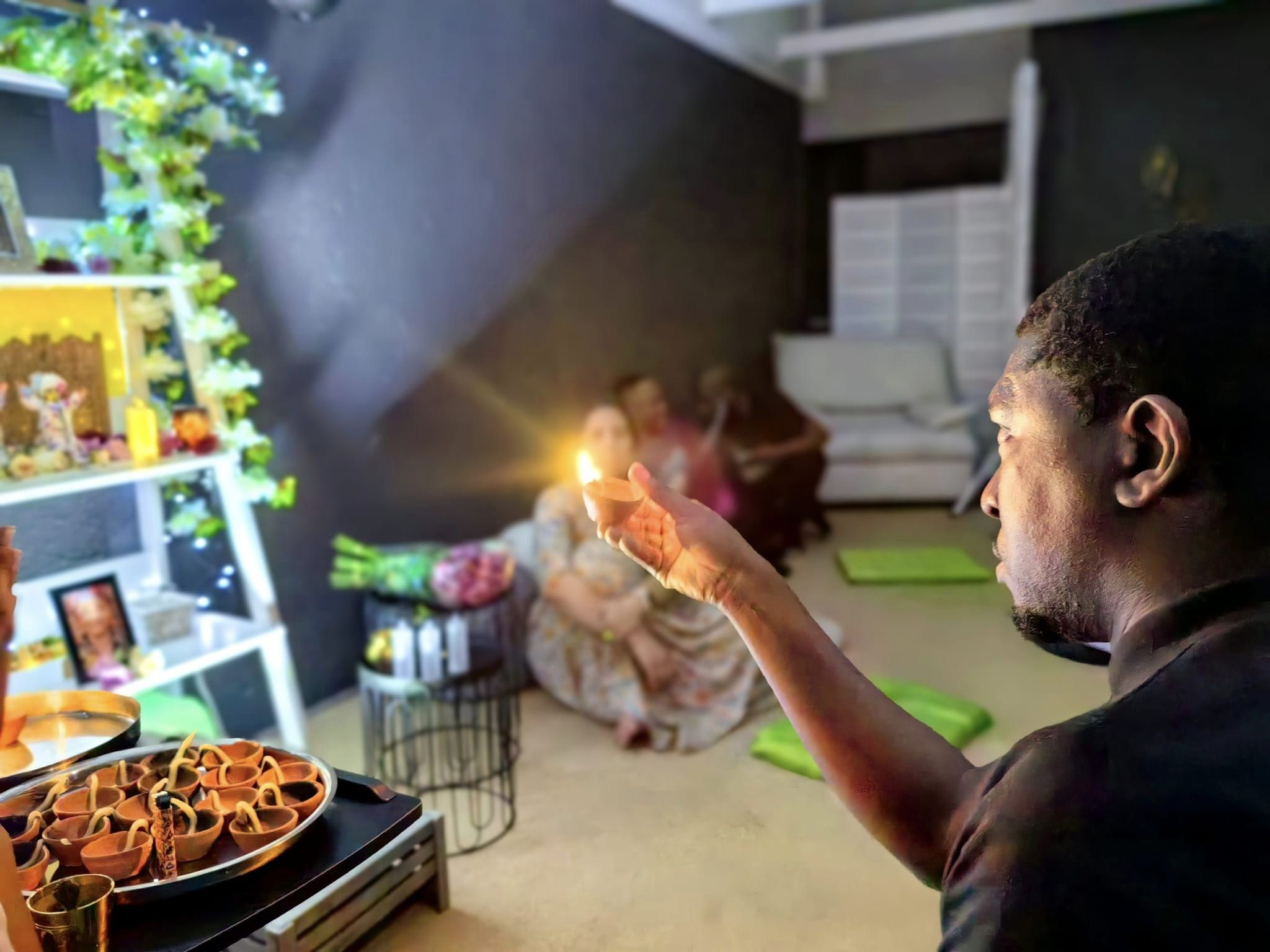
Студент университета учится предлагать лампу в "WuSA House" в Южной Африке.
С приближением месяца Картика преданные Кришны по всему миру готовятся к одному из самых духовно сильных периодов в календаре вайшнавов. Этот месяц, приходящийся на октябрь и ноябрь, почитается как самый святой в году и предоставляет уникальную возможность для духовного совершенствования. Картика - это время, когда преданные сосредотачивают свои сердца на Господе Кришне, особенно в Его детской форме Дамодары, которого Его мать, Яшода, однажды связала верёвкой, чтобы обуздать Его озорство.
Значение Картики заключается в её связи с Чатурмасьей - четырьмя месяцами, отмечающими сезоны дождей и осени в Индии. Традиционно в это время странствующие священники и проповедники воздерживались от путешествий, предпочитая углублять свои духовные практики. Картика, последний из этих четырёх месяцев, - это время, когда преданные дают дополнительные обеты, совершают дополнительную деятельность в настроении служения и поклоняются Кришне с большей интенсивностью.
Одним из главных событий Картики является молитва Дамодараштака, которую ежедневно поют преданные, вознося свечу или лампу с топлёным маслом к Кришне. Это подношение символизирует свет преданности, освещающий тёмные уголки души. Семьи, молодые и пожилые, собираются, чтобы совершить этот простой, но глубокий ритуал, создавая безмятежную атмосферу благоговения и любви.
Преданные также отмечают такие крупные праздники, как Дивали, фестиваль огней, который празднует возвращение Господа Рамы в Айодхью, и Говардхан-пуджа, в память о том, что Кришна поднял холм Говардхан, чтобы защитить жителей Вриндавана. Эти фестивали, переплетаясь с праздниками Картики, добавляют много радости, традиций и поклонения.
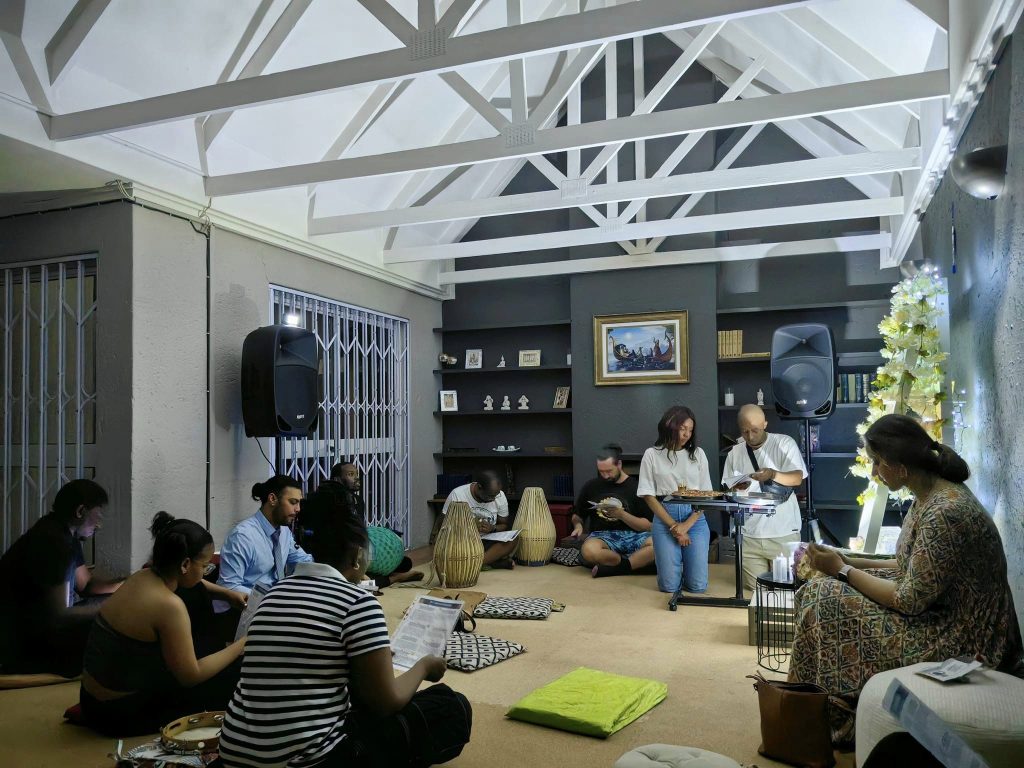
Студенты узнают о Картике в "WuSA House".
Но что действительно делает Картику особенной, так это её фокус на добровольных обетах. Как однажды метко выразился Шачинандана Свами, "в месяц Картика... преданным Господа Кришны рекомендуется усилить концентрацию на Его поклонении, посвящая ежедневное преданное слушание и воспевание Шримати Радхарани, Его вечной супруге". Эти обеты, предложенные в настроении глубокой преданности, варьируются от отказа от определённой пищи до усиления практики воспевания мантры Харе Кришна. Это обращение призывает и Радху, и Кришну к служению.
Если одни обеты рождаются из искреннего стремления к духовному прогрессу, то другие с годами принимают более... нетрадиционный оборот. В духе Картики мы не можем не посмеяться над некоторыми из самых странных обетов преданных, напоминающих нам, что преданность, даже в самых причудливых её формах, всё равно остаётся преданностью. От отказа от любимой подушки до клятвы не говорить более 500 слов в день (кошмар для тех, кто любит поболтать) - преданные показали, что их креативность не знает границ.

Подношение ламп во время Картики.
В заключение Десять забавных фактов о Картике что может удивить даже опытных наблюдателей:
1. Верёвки любви Дамодары: Имя "Дамодара" происходит от "дама", что означает "верёвка", и "удара", что означает "живот", подчёркивая божественную игру, в которой любовь Его матери связывает Кришну.
2. Благословение слона: Считается, что во время Картики любое доброе дело вознаграждается в тысячу раз - представьте себе, что вы получите благословение от духовно заряженного слона!
3. Вознаграждение за подношение лампы: Считается, что подношение лампы Кришне в течение этого месяца устраняет грехи ста жизней. Никакого давления!
4. Особый статус йогурта: Йогурт играет ключевую роль в Картике, ведь именно с горшком йогурта Яшода преследовала Кришну, прежде чем связать Его.
5. Клятвенное разнообразие: Преданные могут отказаться от всего, начиная от сладостей и заканчивая выступлениями на рабочих собраниях, что может создать интересную динамику в офисе.
6. Лампы с топлёным маслом против масляных ламп: Предпочтение отдаётся лампам с топлёным маслом, поскольку топлёное масло олицетворяет чистоту и, как считается, несёт подношение непосредственно божеству.
7. Духовное значение Дивали: Хотя Дивали широко отмечается как праздник возвращения Господа Рамы, он также знаменует время, когда Кришна победил демона Наракасуру - ещё один повод зажечь лампы!
8. Экопослание холма Говардхана: Подъём Кришной холма Говардхан рассматривается как божественное послание об экологическом сознании и заботе о природе.
9. Предельный подарок: Считается, что совершение даже небольшого акта преданности во время Картики приводит к освобождению от круговорота рождения и смерти.
10. Комедийные клятвы: От обета не пить апельсиновый сок в течение месяца до обещания ходить по коридорам храма только спиной вперёд - Картика вдохновляет на уморительно изобретательные акты преданности.
В итоге Картика - это время глубоких духовных возможностей и радости, месяц, когда преданные могут усилить свою связь с Кришной и одновременно посмеяться над светлой стороной своих искренних обетов. Будь то подношение лампад или отказ от сладостей, суть Картики заключается в искреннем выражении любви к Высшему, даже если она обернута в причудливый обет никогда больше не есть бананы.
Мнения, высказанные рецензентом, являются исключительно его собственными и не обязательно отражают мнение ИСККОН или "Новости ИСККОН".







